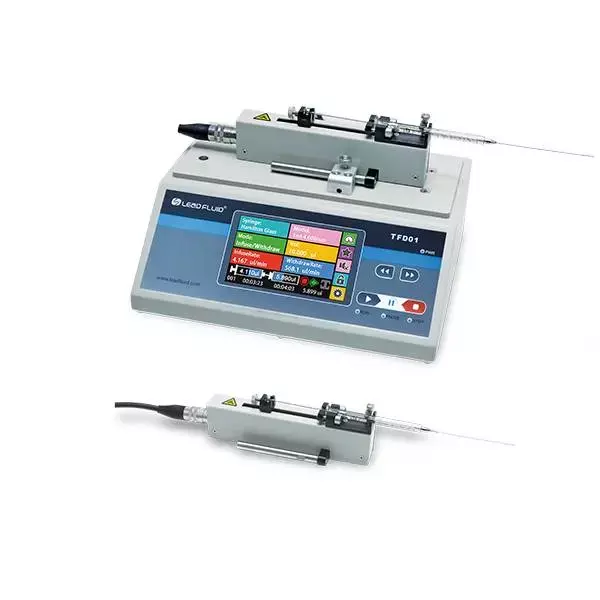Understanding the Operation of Laboratory Pumps: Precise Fluid Handling for Scientific Applications
Introduction
Laboratory pumps are indispensable tools in scientific research and experimentation, enabling precise fluid handling for a wide range of applications. These pumps are specifically designed to meet the stringent requirements of laboratory settings, where accuracy, repeatability, and contamination-free operation are of utmost importance. In this article, we will delve into the workings of laboratory pumps, exploring their mechanisms and highlighting their significance in scientific laboratories.
Types of Laboratory Pumps
Laboratory pumps encompass various types, each tailored to specific fluid handling needs. Some common types of laboratory pumps include:
- Peristaltic Pumps: Peristaltic pumps utilize a rotating mechanism to compress and propel fluids through a flexible tube. This design prevents fluid contamination and provides accurate and repeatable flow rates.
- Syringe Pumps: Syringe pumps operate by applying pressure to a syringe barrel, forcing the fluid to flow through a needle or tubing. These pumps are ideal for precise and controlled delivery of small volumes of liquids.
- Vacuum Pumps: Vacuum pumps utilize suction to remove air or other gases from a system, creating a vacuum. They are crucial for processes such as filtration, degassing, and vacuum drying.
- Diaphragm Pumps: Diaphragm pumps use a flexible diaphragm to create pressure differentials, allowing fluid to be drawn in and expelled. These pumps are suitable for applications requiring gentle and pulsation-free fluid transfer.
Working Principles of Laboratory Pumps
While each type of laboratory pump operates based on its unique mechanism, they generally follow these fundamental principles:
- Fluid Intake:
Laboratory pumps are designed to draw fluid from a source, typically a container or reservoir. The method of fluid intake varies depending on the pump type. For instance, peristaltic pumps use a rotating mechanism to compress the tubing, creating a vacuum that draws in the fluid. Syringe pumps, on the other hand, pull the fluid into the syringe barrel by creating a pressure differential. - Fluid Transfer:
Once the fluid is drawn into the pump, it undergoes a transfer process. Laboratory pumps ensure precise control over the flow rate and volume of the transferred fluid. This control is achieved through mechanisms such as adjusting rotational speed, changing syringe plunger positions, or regulating pressure differentials. - Fluid Discharge:
After the fluid has been transferred, laboratory pumps direct it to the desired location. This can be a receiving vessel, another apparatus within the laboratory setup, or a waste container. The discharge process is carefully controlled to avoid spills, contamination, or disruption to the experiment or procedure.
Features and Benefits of Laboratory Pumps
Laboratory pumps offer several features and benefits that make them invaluable tools in scientific research and experimentation:
- Accurate and Precise Fluid Handling:
Laboratory pumps are designed to provide exceptional accuracy and precision in fluid transfer. They allow for precise control over flow rates, volumes, and dosages, ensuring consistency and reproducibility in experiments and processes. - Contamination-Free Operation:
Maintaining a sterile and contamination-free environment is crucial in laboratory settings. Laboratory pumps are constructed with materials that are chemically resistant and non-reactive, preventing contamination of the fluid being handled. Additionally, many pumps offer disposable or easily replaceable components to further minimize the risk of contamination. - Versatility and Compatibility:
Laboratory pumps are compatible with a wide range of fluids, including corrosive chemicals, viscous substances, and delicate biological samples. They can be used with different tubing materials or syringe sizes to accommodate various fluid types and volumes. - User-Friendly Interface and Controls:
Many laboratory pumps feature intuitive interfaces and controls, allowing researchers and technicians to program and adjust parameters easily. This user-friendly operation enhances convenience, efficiency, and accuracy in laboratory workflows. - Safety Features:
Laboratory pumps often incorporate safety features such as pressure sensors, alarms, and automatic shut-off mechanisms. These features protect the pump, the experiment, and the operator from potential hazards, such as excessive pressures or overflows.
Conclusion
Laboratory pumps are essential tools that enable precise and accurate fluid handling in scientific research and experimentation. By utilizing mechanisms such as peristaltic action, pressure differentials, or vacuum creation, these pumps ensure contamination-free operation and provide precise control over fluid transfer. With their versatility, compatibility, and user-friendly features, laboratory pumps play a pivotal role in advancing scientific knowledge and facilitating breakthrough discoveries in various fields.

